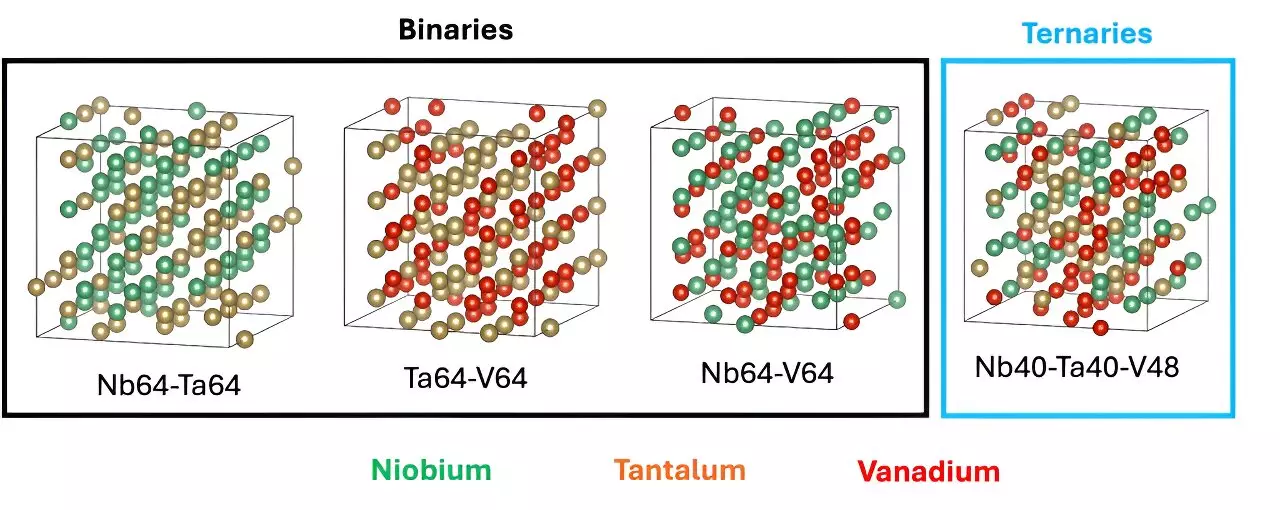In the race to develop efficient nuclear fusion reactors, the quest for innovative materials is paramount. A recent study spearheaded by researchers from the Oak Ridge National Laboratory (ORNL) exemplifies this endeavor, leveraging artificial intelligence (AI) to discover new metal alloys designed for high-performance shielding in fusion applications. The critical nature of this research lies in its potential to significantly enhance nuclear fusion technology, making it a pivotal area of exploration within the scientific community.
The study, which emerged under the auspices of former AI Initiative Director David Womble, transitioned into a focused project emphasizing the role of AI in scientific exploration, known as the Artificial Intelligence for Scientific Discovery (AISD). This initiative showcases a shift towards integrating advanced computing techniques with materials science, illustrating the synergy between these fields for greater scientific discovery.
Historically, the development of alloys suitable for extreme environments, such as those found in nuclear reactors, has predominantly relied on established materials like tungsten, which possesses exceptional heat resistance. However, while tungsten-based alloys have proven effective under high temperatures, they have often struggled to deliver consistent shielding performance. Researchers identified this inconsistency as a significant hindrance to progress in nuclear fusion technologies.
Emerging from this backdrop, the materials science community has begun exploring innovative solutions that challenge conventional wisdom. The potential for disruptive advancements is evident, enabling the introduction of completely novel materials into the fusion landscape. Nevertheless, the sheer number of possible metallic combinations presents an overwhelming challenge. Consequently, the integration of AI technology has surfaced as a promising avenue to streamline this process, dramatically reducing the time and resources typically expended during materials discovery.
Led by ORNL AI data scientist Massimiliano Lupo Pasini, the researchers devised a sophisticated AI model capable of identifying new alloy candidates by sifting through extensive data sets. This AI-driven approach not only expedites the exploration of potential combinations but also enhances accuracy in predicting the most promising candidates. The collaborative effort involved a diverse team of scientists, pooling expertise from various disciplines to ensure comprehensive coverage of the material space.
As the project progressed, the team successfully generated a critical database that highlights three promising elements for future alloys. The collaboration involved contributions from multiple directors and departments at ORNL, underpinning the project’s interdisciplinary nature. This blend of knowledge signifies not only a novel approach to alloy development but also the importance of teamwork in scientific breakthroughs.
While the generation of this AI-aided database represents a major milestone, it serves merely as a foundation for future work. The data produced will be essential in training the AI model, enabling it to accelerate the discovery of new alloys by examining various combinations of targeted elements. As Lupo Pasini articulated, addressing the complexities of creating high-entropy alloys necessitates a meticulous approach, with six elements needing thorough exploration.
Moreover, the computational resources required to generate such data are substantial. The team navigated numerous challenges during the research process, including the high computational cost of quantum mechanical calculations performed on supercomputing facilities. The extensive time investment—over a year dedicated to data generation—underscores the ambitious scope of this project.
Looking ahead, the next phase will involve employing the generated data to further train and refine the AI model. The ultimate goal is to assist material scientists in overcoming traditional trial-and-error methodologies, allowing for a more targeted and efficient exploration of alloy compositions. As fusion technology advances, the societal implications of these breakthroughs could be profound, potentially yielding safer and more sustainable energy sources.
The convergence of artificial intelligence and materials science heralds a new era in the development of nuclear fusion technologies. The efforts of researchers at ORNL exemplify how innovative approaches can reshape traditional paradigms, paving the way for the discovery of new materials that propel technology forward. As this research progresses, the prospect of efficient, high-performance materials for nuclear reactors could transform energy production, making substantial strides towards a sustainable future. The intersection of AI and scientific discovery, as exemplified in this study, may indeed hold the key to unlocking the full potential of nuclear fusion.


Leave a Reply